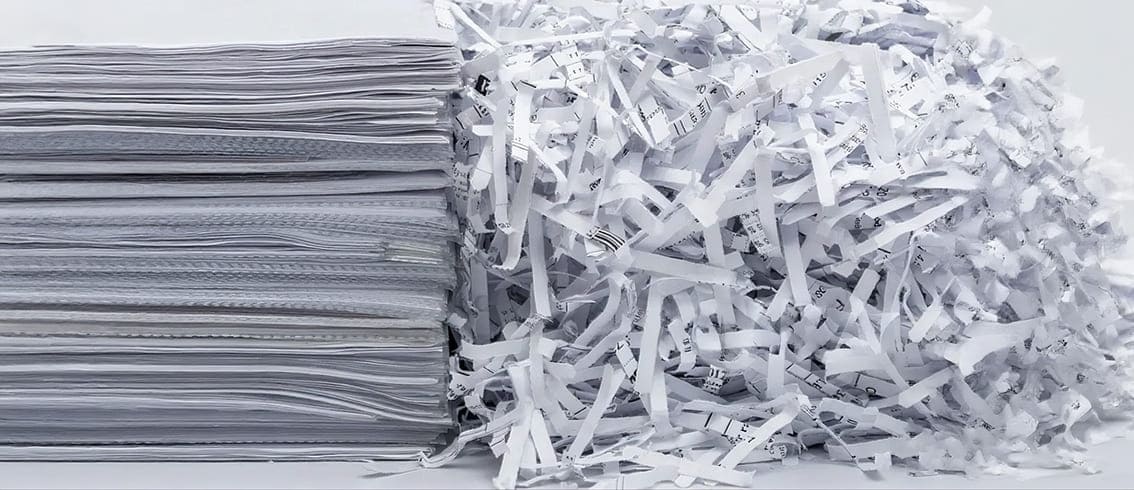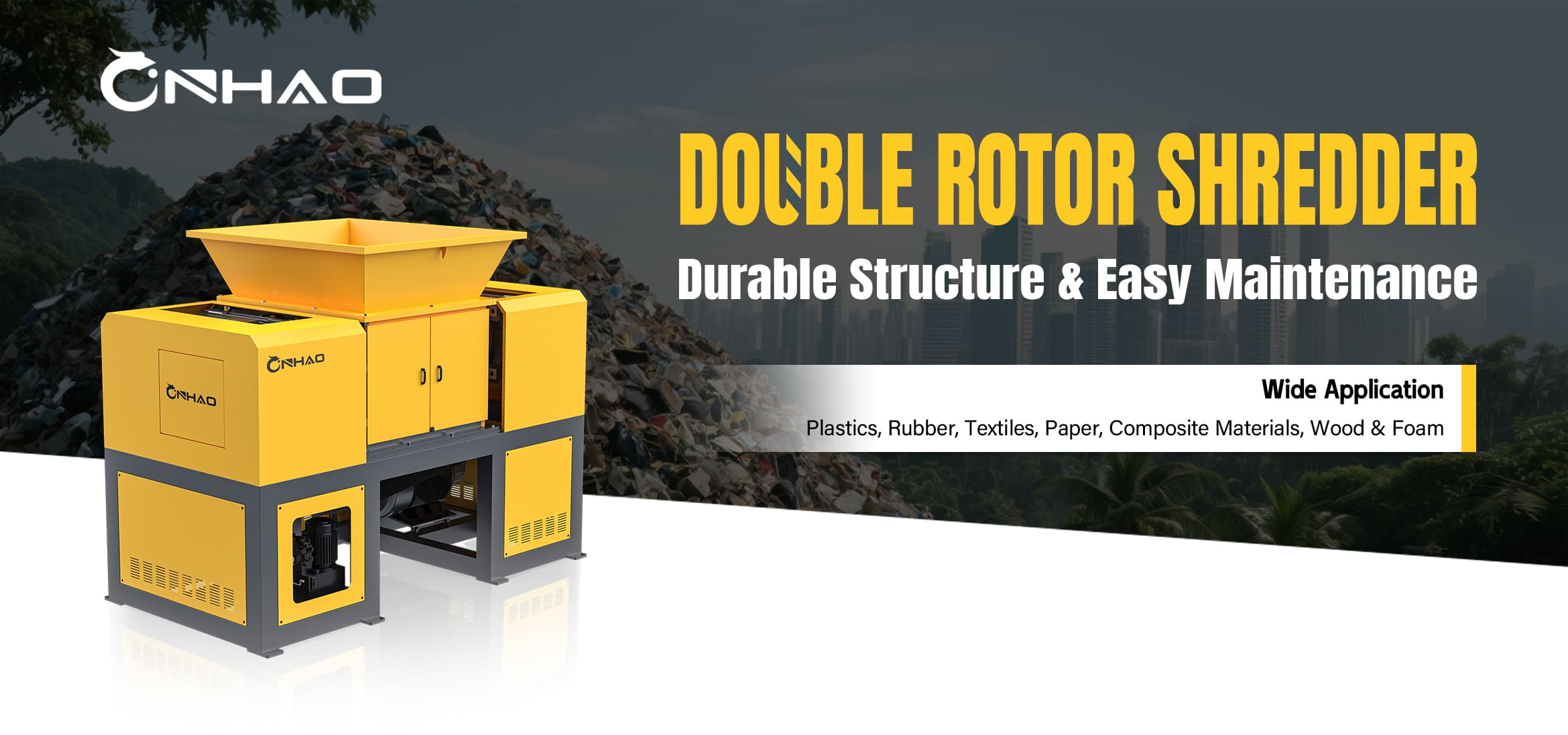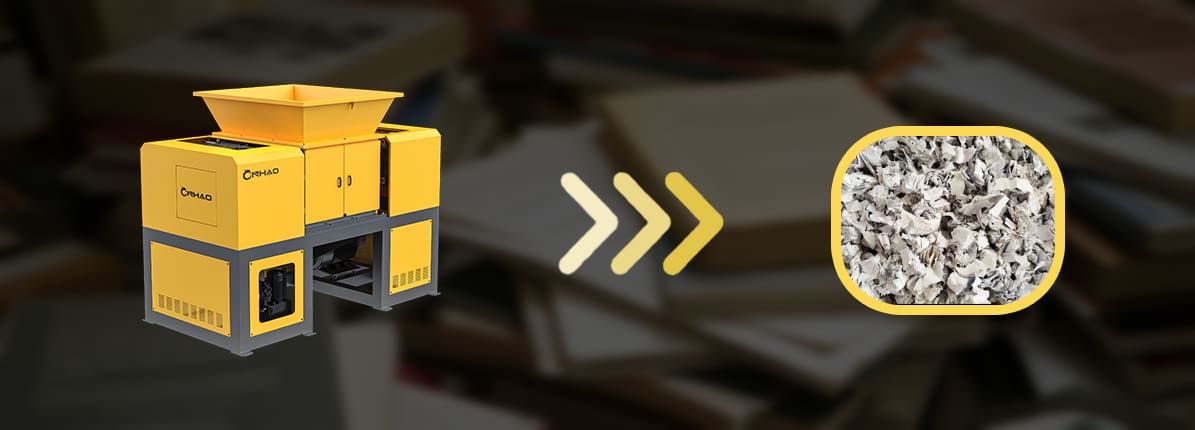With the rapid development of the information society and the knowledge economy, Despite digitalization, the global stock of paper-based books and records remains vast. UNESCO reports more than 2.2 million new titles published worldwide each year.
- A survey by the National Association for Information Destruction (NAID, 2020) revealed that more than 65% of enterprises process confidential documents annually, with paper still a major source of data leakage.
- Regulations such as the EU GDPR, U.S. HIPAA, and China’s Data Security Lawmandate compliant destruction of sensitive paper files to prevent privacy breaches and economic loss.

Traditional manual methods or low-efficiency equipment can no longer simultaneously ensure data security and high-throughput processing. In this context, The Double rotor shredder, with its high-torque cutting and stable operation, enables efficient and irreversible destruction, making it essential for large-scale, mechanized document disposal.

Global Growth Trends in Obsolete Books and Confidential Documents
- Data from the International Pulp and Paper Industry Association (IPPIA) indicate, global consumption 399 million tonsin 2021, with office paper and publications ≈ 15%.
- Global paper consumption is still rising, especially in developing countries.
- Despite digitalization, paper contracts, records, and books remain widespread.

Recycling & Processing Challenges
Recycling Stage
- Obsolete books often contain ink, binding adhesives, plastic covers, and metal staples, substantially complicate the processing workflow.
- Confidential documents, confidential files often incinerated/landfilled, wasting resources.
Environmental Pressure
- Globally, Paper production/disposal emits \~250 Mt CO₂-eq/year;
- Landfills release methane (25× CO₂ impact);
- Poor incineration adds CO₂ and particulates.Posing threats to both the environment &public health.
Technical Bottlenecks
- Traditional single-shaft/strip-cut shredders suffer from low efficiency.
- Tightly bound books cause jams and blade damage in ordinary shredding equipment.

Double Rotor Shredder Solution
The Double rotor shredder operates on the principle of low-speed, high-torque shearing. By utilizing dual counter-rotating shafts equipped with blades, it can efficiently shred hard paper, glued books, and bundled documents.
Advantages
- Throughput 500–2000 kg/h;Uniform shredding output (30–80 mm).
- Handles staples, wires, glue, and plastic coverswithout compromising performance.
Recycling Utilization
- When combined with magnetic separation and air-sorting recovery systems, it enables effective removal of plastic, metal, and other impurities.
- The shredded fibers re-enter papermaking, improve wastepaper recycling efficiency.

Equipment Configuration and Extensions
Basic Configuration
- Double rotor shredder main unit:Equipped with wear-resistant alloy blades and a low-speed, high-torque motor.
- Conveyor belt: Enables automated feeding, improving both efficiency and operational safety.
- Dust removal system: Integrated with a bag-type dust collector to minimize airborne particulate pollution.
Additional Configuration
- Magnetic separator: Removes metallic impurities and enhances fiber purity.
- Baler: Compresses shredded paper directly into bales, facilitating transport and recycling.
- Air-sorting recovery system: Separates lightweight paper dust and heavier contaminants (e.g., metal clips, plastic covers), thereby improving pulp purity for recycling and reducing energy consumption in subsequent papermaking processes.
- Visual monitoring system: Cameras and real-time interfaces provide a clear display of shredding and conveying operations, enabling operators to promptly detect issues such as paper jams, blockages, or dust anomalies, thereby lowering failure rates and improving operational safety.
- Intelligent control system: An optional Siemens automated control cabinet achieve centralized equipment management and real-time monitoring(such as current, voltage, temperature, & rotational speed)key parameters. The system enables automated fault response and intelligent maintenance control, significantly reducing equipment operation and maintenance costs.

The increasing global volume of obsolete books and confidential documents poses both environmental and information security challenges. Double rotor shredders offer an efficient, compliant, and eco-friendly solution for their destruction and recycling.